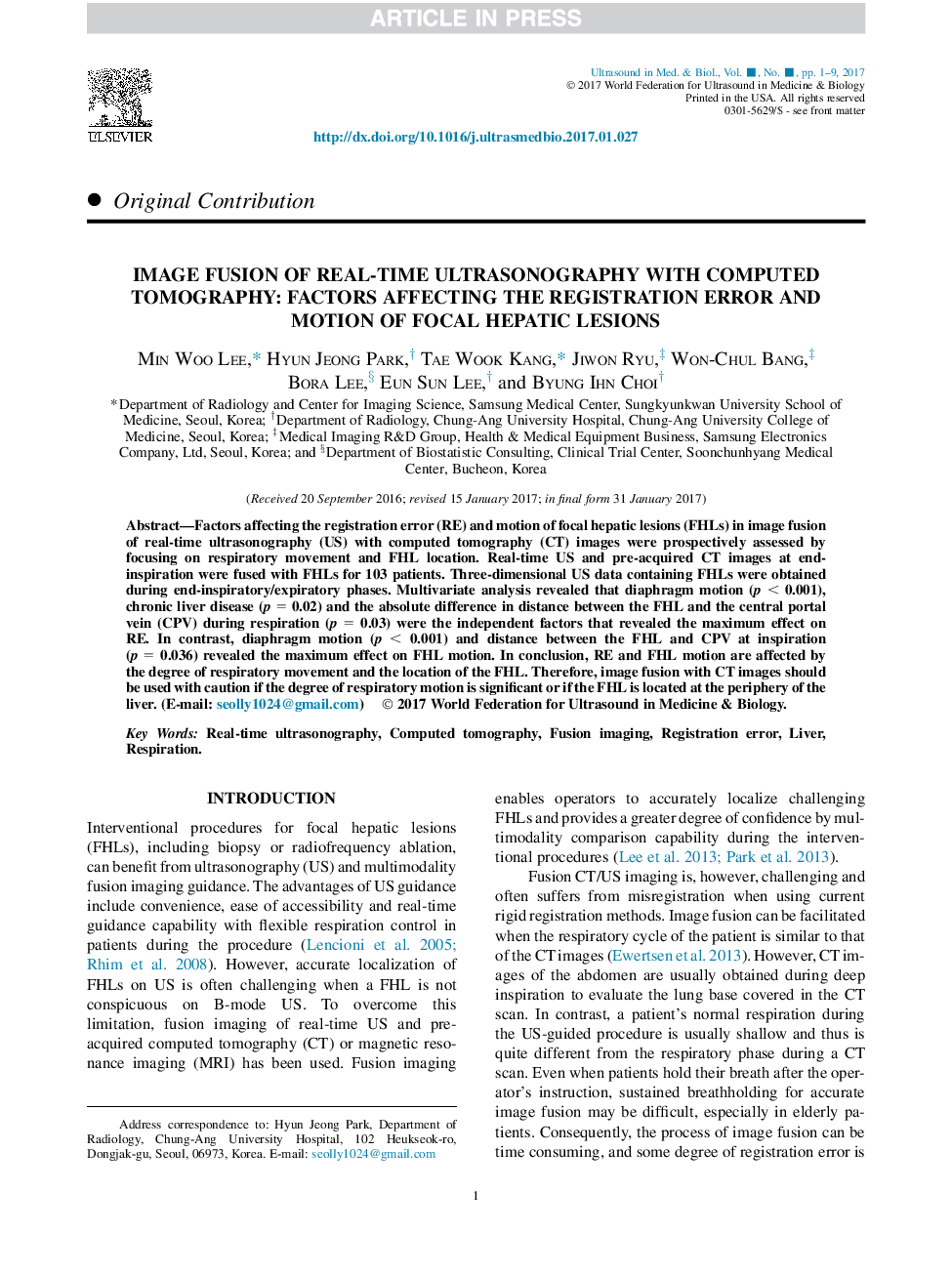| Article ID | Journal | Published Year | Pages | File Type |
|---|---|---|---|---|
| 5485621 | Ultrasound in Medicine & Biology | 2017 | 9 Pages |
Abstract
Factors affecting the registration error (RE) and motion of focal hepatic lesions (FHLs) in image fusion of real-time ultrasonography (US) with computed tomography (CT) images were prospectively assessed by focusing on respiratory movement and FHL location. Real-time US and pre-acquired CT images at end-inspiration were fused with FHLs for 103 patients. Three-dimensional US data containing FHLs were obtained during end-inspiratory/expiratory phases. Multivariate analysis revealed that diaphragm motion (p < 0.001), chronic liver disease (p = 0.02) and the absolute difference in distance between the FHL and the central portal vein (CPV) during respiration (p = 0.03) were the independent factors that revealed the maximum effect on RE. In contrast, diaphragm motion (p < 0.001) and distance between the FHL and CPV at inspiration (p = 0.036) revealed the maximum effect on FHL motion. In conclusion, RE and FHL motion are affected by the degree of respiratory movement and the location of the FHL. Therefore, image fusion with CT images should be used with caution if the degree of respiratory motion is significant or if the FHL is located at the periphery of the liver.
Keywords
Related Topics
Physical Sciences and Engineering
Physics and Astronomy
Acoustics and Ultrasonics
Authors
Min Woo Lee, Hyun Jeong Park, Tae Wook Kang, Jiwon Ryu, Won-Chul Bang, Bora Lee, Eun Sun Lee, Byung Ihn Choi,
